01 Guest Speaker
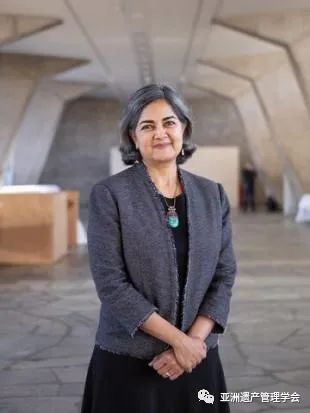
Jyoti Hosagrahar
Deputy Director of the UNESCO World Heritage Centre, architect and cultural expert, former Professor at Columbia University in New York and Professor at the College of Art and Design in Bangalore, India
02 Report Summary
As the first speaker of the International Symposium on Conservation and Sustainable Development of Historic Cities, Professor Jyoti Hosagrahar systematically reviewed the theoretical and practical development of historic urban landscapes (HUL) in the past ten years, and pointed out that the sustainable development of cities and heritage is the core issue of historic urban landscapes in this period. In her report, she presented two typical examples of historic urban landscapes in the Asia-Pacific region and shared a series of exchanges on sustainable urban and heritage development conducted by the UNESCO World Heritage Centre in recent years.
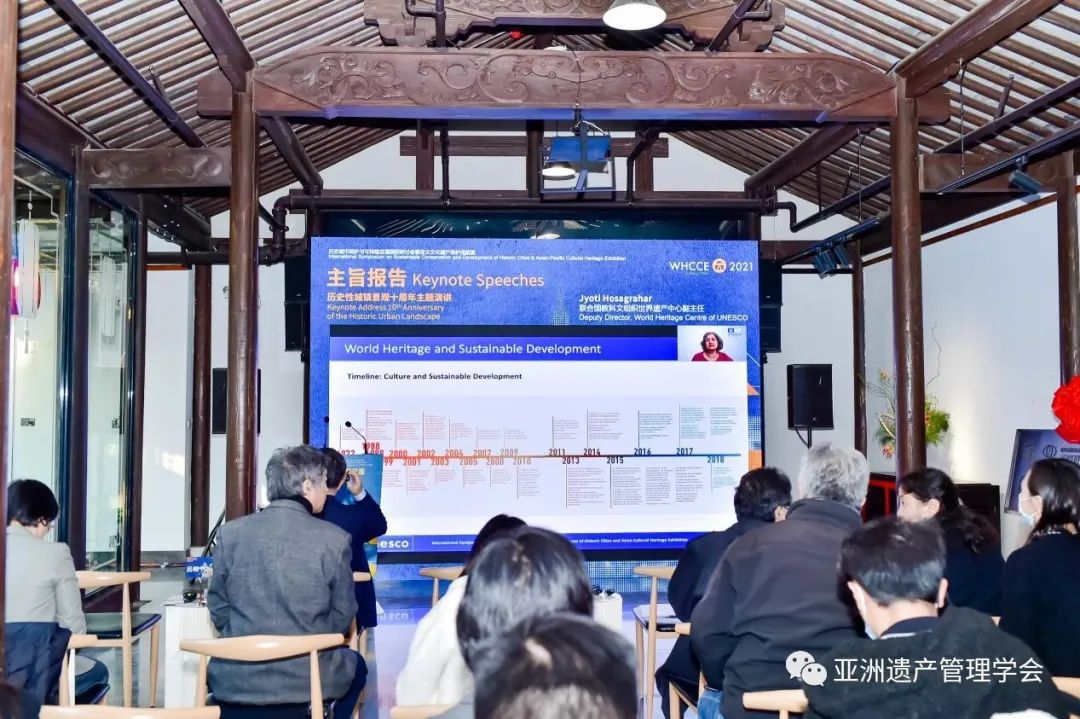
03 Report Content
01 Development process of historical urban landscape theory
- Concept presentation
Historic Urban Landscape (HUL) is proposed in the context of the escalating conflict between urban development and conservation in many World Heritage cities. the Recommendation on the Historic Urban Landscape, adopted in 2011, defines a "historic urban landscape" as "an urban area with cultural and natural values and characteristics, rich in the cumulative effect of history." This goes beyond the concept of 'historic centre' or 'building complex' to encompass a broader urban context and geographical context." According to the concept of the historic townscape, the city is an organism that continues to evolve, in a process that respects the interaction between the natural and the man-made environment. In the process of dynamic urban development, we should continuously improve the efficiency of urban space and its diversified utilizability, and promote the functional adjustment oriented to social needs.
- Sustainable development of the historic urban landscape
With the acceleration of industrialization and urbanization, as well as the change of climate, environment and other uncertain factors, the development of historic urban landscape is facing more severe challenges. In order to better protect World Heritage sites and better align with the United Nations 2030 Sustainable Development Goals (SDGs), UNESCO guides World Heritage sites to achieve sustainable development from the top down through initiatives, platforms and frameworks. In June 2013, UNESCO published "New life for historic cities: An Analysis of Conservation Methods for Historic urban Landscapes" (New Life for Historic Cities: The historic urban landscape approach explained has effectively promoted the study of relevant theories and the promotion of cases.
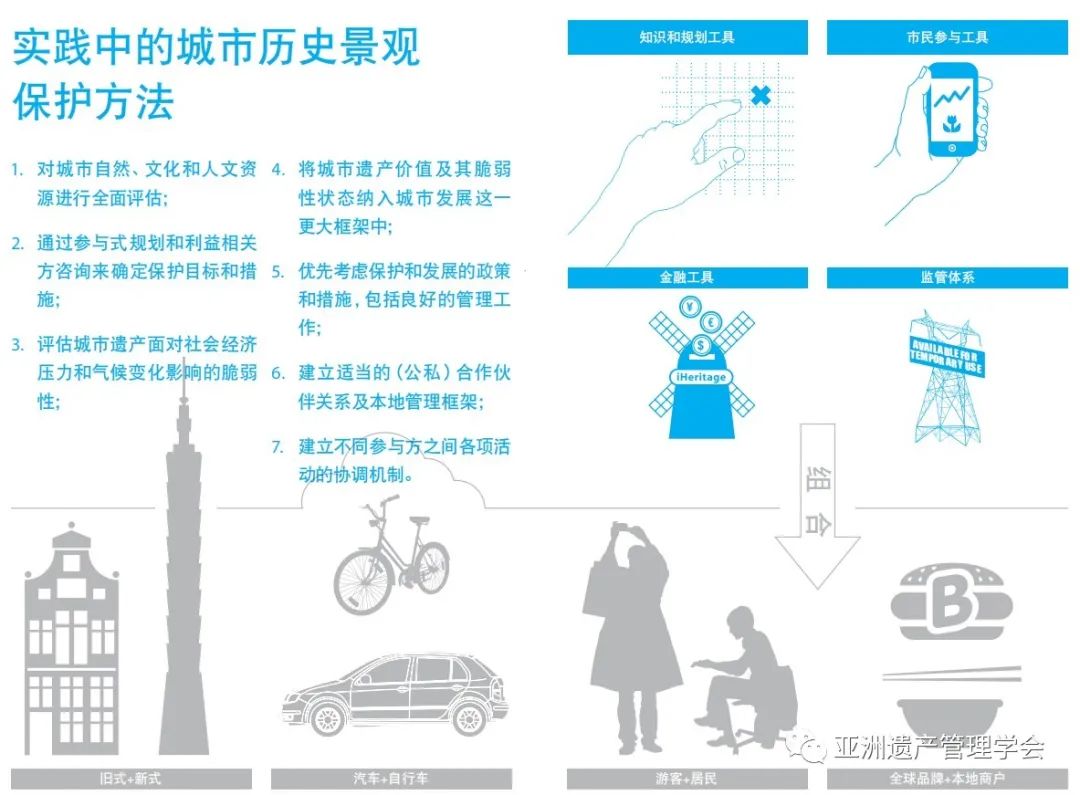
The 20th session of the Conference of the States Parties to the Convention on the Protection of the World Cultural and Natural Heritage, held in 2015, incorporated the concept of sustainable development into the World Heritage Convention and put forward four dimensions of environmental sustainability, inclusive social development, inclusive economic development, and peace and security.

02 Practice sharing in the Asia-Pacific region
Here are some of the best practices in the Asia-Pacific region that exemplify the concept of historic urban landscapes and sustainable development. These projects have also been the winners of the UNESCO Asia Pacific Prize for Cultural Heritage Conservation (hereinafter referred to as the "Asia Pacific Prize") in recent years.
· Shajing Ancient Market New Project, Shenzhen, China |
The first case is the new project in Shajing Guxu, Shenzhen, which won the Asia-Pacific Award in 2021. Shajing Ancient Market Regeneration is a series of historical space conservation, activation and regeneration projects including river regulation, landscape design, architecture and interior design. Its core part is the demonstration water body renovation and landscape transformation of a section (about 70 meters) of the Longjin River. The project cleverly uses the method of "urban acupuncture", selecting the most critical meridians and acupoints and making slight interventions to avoid the disruption of the local social fabric and spatial texture caused by abrupt design interventions. The project team restored the riverbank in a low-cost, low-tech manner that enhanced the sense of community identity while respecting the spatial form of the historic district. While revitalizing traditional neighborhoods, the project also demonstrates that innovative urban design can preserve historic landscapes in a holistic way.
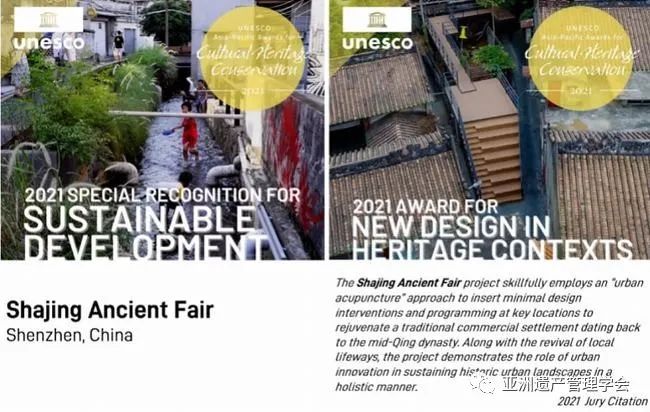
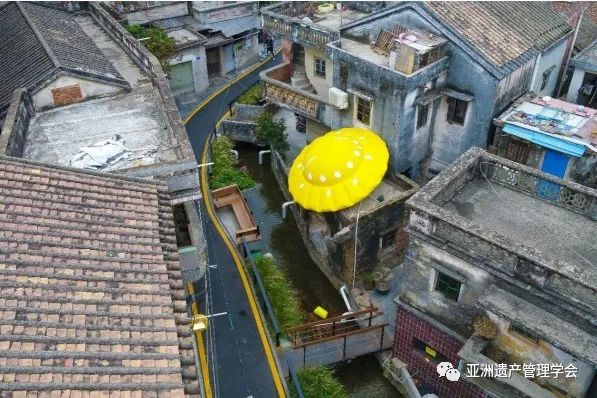

- Sand Nursery, |, New Delhi, India
The second case is Sunder Nursery in New Delhi, India, which won the Asia Pacific Prize 2020. The project transformed a wasteland into an oasis in the heart of the city, with far-reaching implications. Its concept of ecological restoration has inspired people that heritage protection workers should not only stop at the restoration and maintenance work at the monument level, but also have the quality of both nature and humanity, and deeply understand the dialectical relationship between the two, in order to truly achieve the goal of sustainable development.
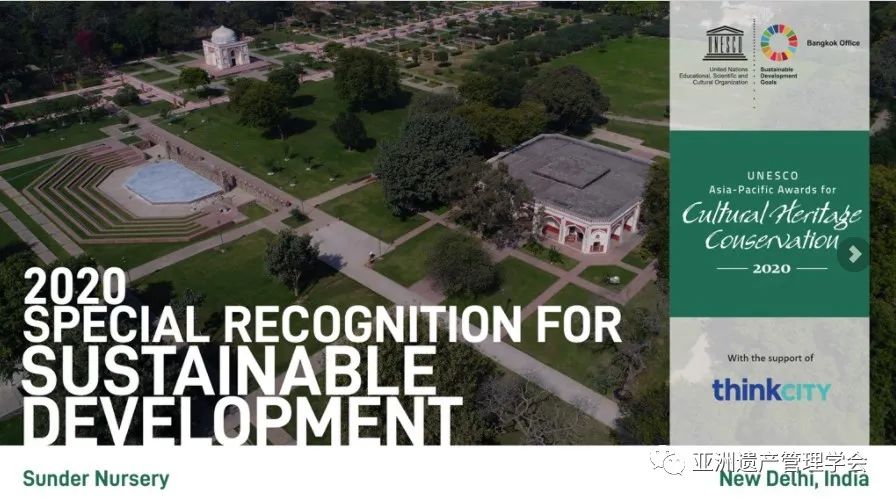
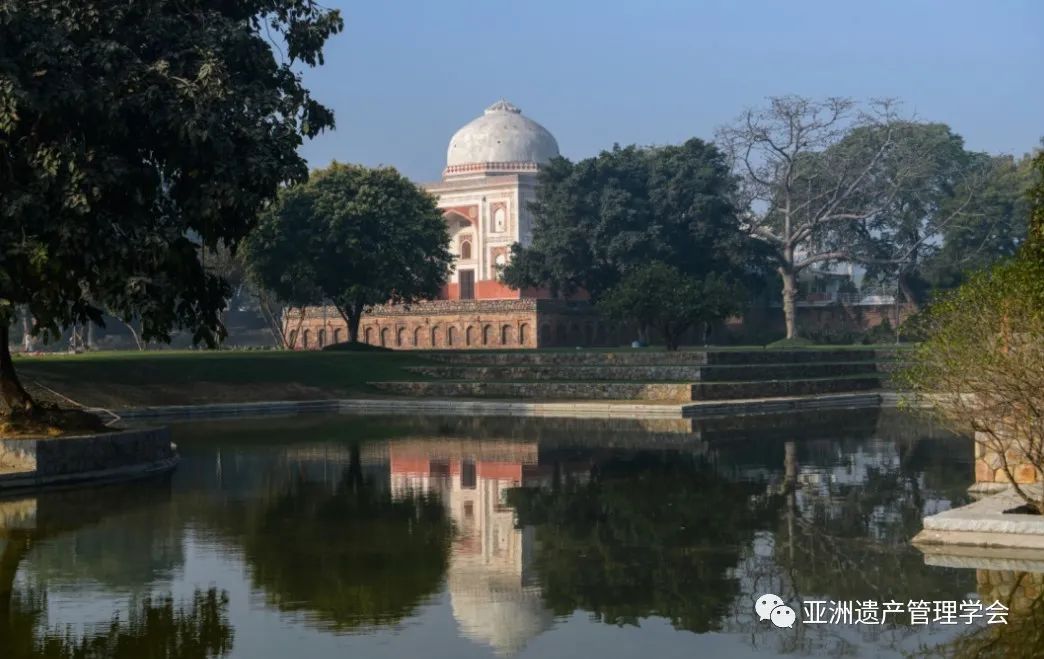

03 Activity Exchange
In order to promote the development and innovation of historical urban landscape theory, UNESCO World Heritage Center has carried out many research and exchange activities in recent years.
- World Heritage City Dialogues
Since 2019, The UNESCO World Heritage Centre, under the framework of The World Heritage Cities Programme, The World Heritage City Dialogues mechanism has been established and a series of activities have been carried out. The mechanism aims to bring together the conservation and management experience of various World heritage cities and build a platform for dialogue and exchange among practitioners of heritage city conservation worldwide.
In 2020, more than 250 heritage conservation practitioners participated in online discussions, and more than 80 shared their experiences and challenges. They discussed the impact of COVID-19 on heritage conservation and management, and how urban heritage management can be revitalized. This year's discussion is an extension of last year's, with a discussion on Adapting Cities for Climate Resilience on World Cities Day. Climate change is currently the biggest threat to World Heritage sites. More than a third of the World's World Heritage cities are coastal or riverfront cities, all of which face serious challenges from climate change.
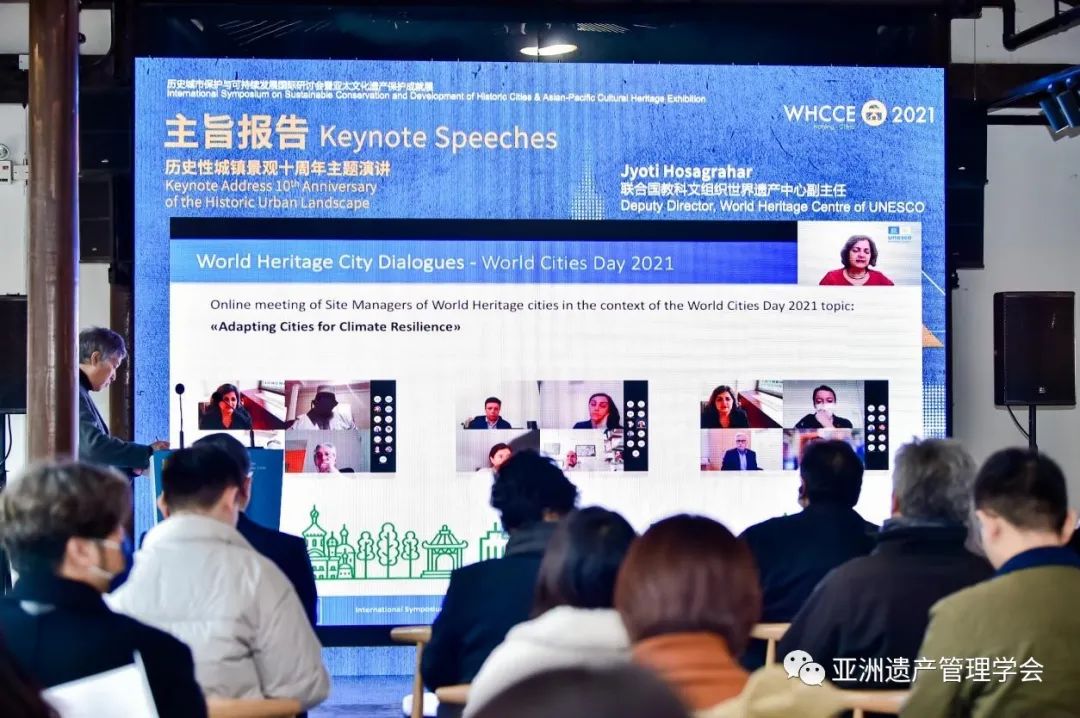
- 10th Anniversary of the 2011 Recommendation on the Historic Urban Landscape (10th Anniversary of the 2011 Recommendation on the Historic Urban Landscape)
In 2021, the 10th anniversary of the Historic Urban Landscape Recommendation was commemorated with keynote speeches by more than 60 government managers from 39 countries and senior representatives of international organizations to discuss the future of historic and cultural cities that are more inclusive, livable and sustainable.
- World Heritage City Lab
From 17 to 20 June 2020, UNESCO successfully held the first World Heritage City Lab workshop. National experiences in analysing, assessing and developing strategies for the conservation and management of World heritage cities were shared online.

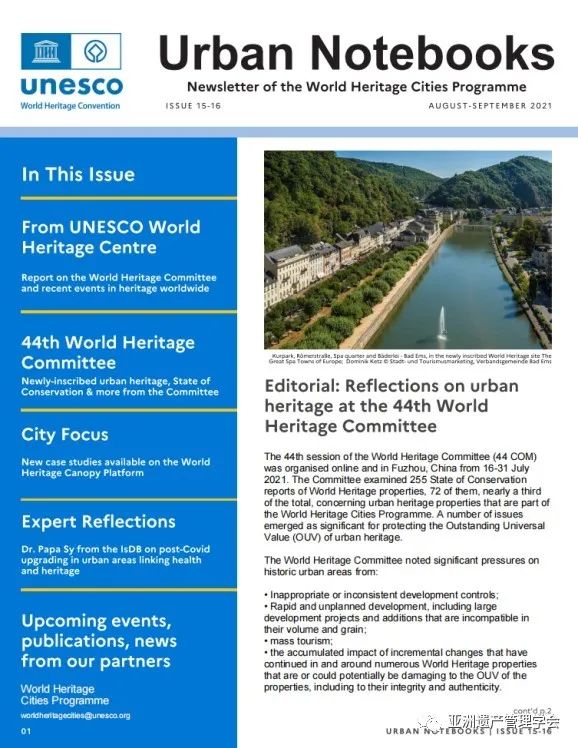
Prof. Jyoti Hosagrahar concluded by stressing that the concept of historic urban landscapes will continue to evolve in practice, and looking forward to more Chinese cities participating in the future.
No. 41, Beijing East Road, Xuanwu District, Nanjing
Nanjing China